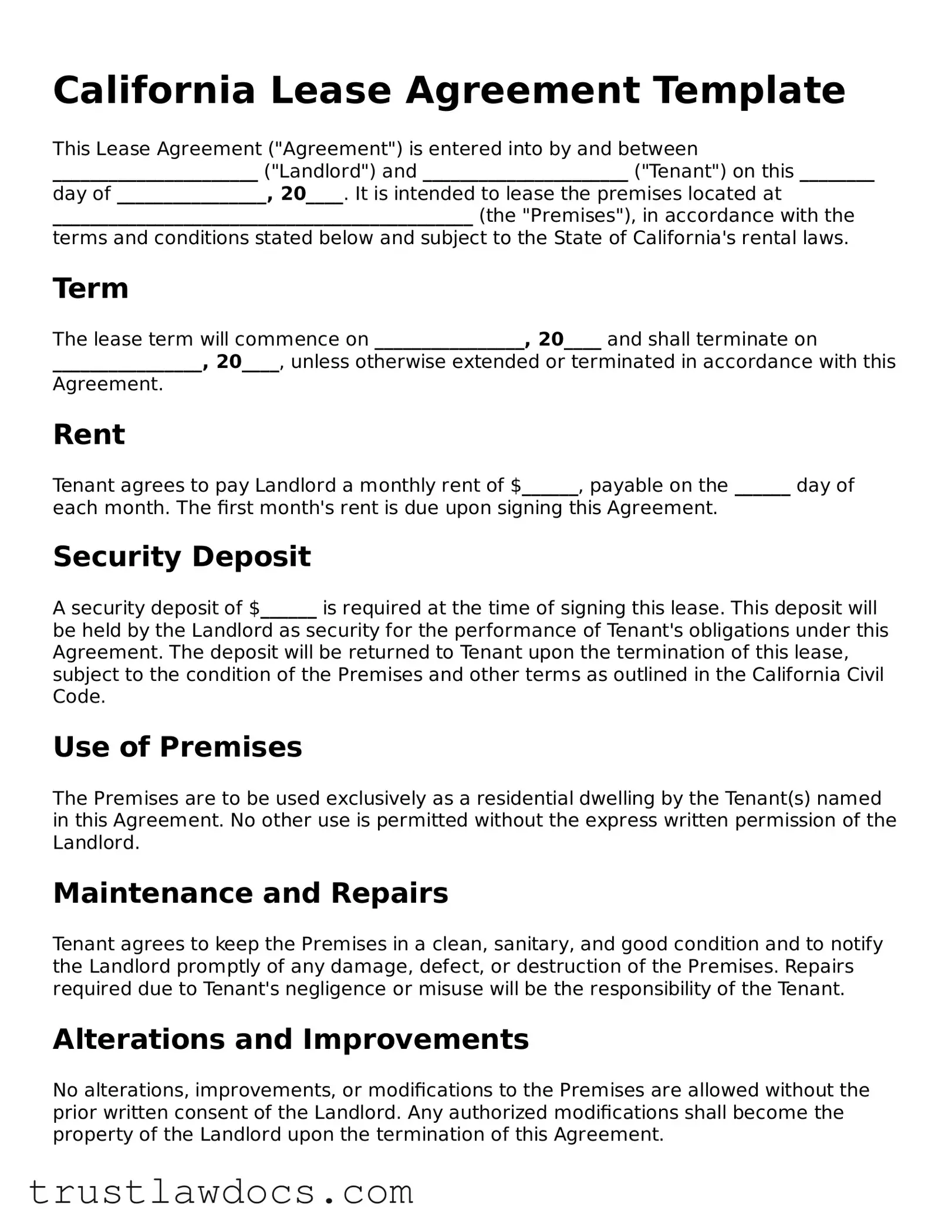California Lease Agreement Template
This Lease Agreement ("Agreement") is entered into by and between ______________________ ("Landlord") and ______________________ ("Tenant") on this ________ day of ________________, 20____. It is intended to lease the premises located at _____________________________________________ (the "Premises"), in accordance with the terms and conditions stated below and subject to the State of California's rental laws.
Term
The lease term will commence on ________________, 20____ and shall terminate on ________________, 20____, unless otherwise extended or terminated in accordance with this Agreement.
Rent
Tenant agrees to pay Landlord a monthly rent of $______, payable on the ______ day of each month. The first month's rent is due upon signing this Agreement.
Security Deposit
A security deposit of $______ is required at the time of signing this lease. This deposit will be held by the Landlord as security for the performance of Tenant's obligations under this Agreement. The deposit will be returned to Tenant upon the termination of this lease, subject to the condition of the Premises and other terms as outlined in the California Civil Code.
Use of Premises
The Premises are to be used exclusively as a residential dwelling by the Tenant(s) named in this Agreement. No other use is permitted without the express written permission of the Landlord.
Maintenance and Repairs
Tenant agrees to keep the Premises in a clean, sanitary, and good condition and to notify the Landlord promptly of any damage, defect, or destruction of the Premises. Repairs required due to Tenant's negligence or misuse will be the responsibility of the Tenant.
Alterations and Improvements
No alterations, improvements, or modifications to the Premises are allowed without the prior written consent of the Landlord. Any authorized modifications shall become the property of the Landlord upon the termination of this Agreement.
Pet Policy
Pets are [allowed/not allowed] on the Premises. If allowed, the Tenant agrees to pay a non-refundable pet deposit of $______. The Tenant is responsible for any damage caused by the pet.
Governing Law
This Agreement shall be governed by and construed in accordance with the laws of the State of California. Any disputes arising under this Agreement shall be adjudicated in the state or federal courts located in California.
Additional Terms and Conditions
- Subletting of the Premises is not allowed without prior written consent from the Landlord.
- Landlord has the right to enter the Premises for inspection, repair, or maintenance, provided that reasonable notice is given to the Tenant.
- Failure to pay rent on time will subject the Tenant to late fees and may lead to termination of this Agreement.
- Any notices under this Agreement shall be given in writing and shall be deemed properly served if delivered in person or sent by registered mail to the parties at the addresses stated above.
IN WITNESS WHEREOF, the parties have executed this Agreement as of the date first above written.
Landlord's Signature: __________________________________ Date: _______________
Tenant's Signature: ___________________________________ Date: _______________
